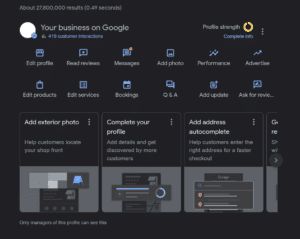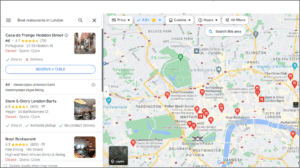This week Google announced An update on doorway pages revealing that they will soon launch a ranking adjustment that could impact on ‘Sites with large and well-established doorway campaigns’. So what could this mean for small service area businesses and franchises?
Of course, it’s impossible to know until the adjustment is released but lets look in more detail at what Google are trying to achieve and this in turn may help to understand the outcome.
Firstly, what is a Doorway Page?
Generally Doorway pages are designed for search engines, not for human beings. Sometimes they automatically redirect to the desired page using Javascript and server side redirection.
Other Doorway pages are more like landing pages in that they have navigation, design and minimal content similar to normal website.
For more detailed information check out http://en.wikipedia.org/wiki/Doorway_page
In the announcement Google say, “We have a long-standing view that doorway pages that are created solely for search engines can harm the quality of the user’s search experience.”
They give the following as examples:
- Having multiple domain names or pages targeted at specific regions or cities that funnel users to one page
- Pages generated to funnel visitors into the actual usable or relevant portion of your site(s)
- Substantially similar pages that are closer to search results than a clearly defined, browsable hierarchy
Their definition of Doorway Pages can be found here…
The problem is, the Google examples cause confusion for service area businesses and franchises as they highlight “pages targeted at specific regions or cities”. It has long been a common practise for this type of business to build location specific pages covering the areas that they service.
If a company has multiple branches or locations with their own unique address and phone number details, then these ‘Location Pages’ are quite straight forward and valid. In fact Google provides clear advice and technical recommendations for this here – Location pages for local businesses and organizations
They encourage that “each location’s or branch’s information should be readily available on a webpage” and the information should include the address, phone number and opening hours and presented in an easy-to-understand format utilising schema.org structured data markup.
So what happens when a business has a single location but has a service area that includes other nearby towns? Again, it is common practise to build specific landing pages focusing on the areas or towns/cities that they cover. This could be seen as slightly spammy but is a practical solution for local services to be found in organic search.
Will these single location websites be penalised with the release of the Google doorway pages update? It is highly likely that websites that have cynically produced multiple cookie-cutter location pages, with no regard to duplicate content or relevancy to the visitor, will be affected.
Conclusion
We hope that the new Google doorway pages update will not affect your average small service area business such as plumbers and electricians. The key will be to keep service area landing pages to a minimum, just the main towns in the area and make sure that the content is unique, relevant and tailored to that specific location.
The location area pages should be linked clearly from the top level navigation using a title such as “areas we service” (do not put a big list of links to locations or postcodes on each page).
Coming up with relevant content for each page is difficult but worth the extra time and effort. Things to consider are local testimonials, articles on completed projects in that area with photos and local staff information.




